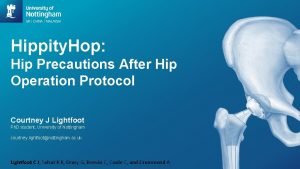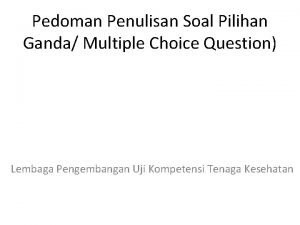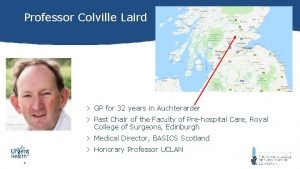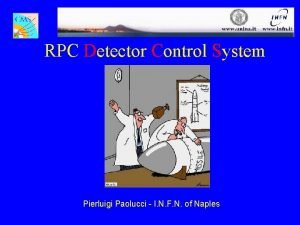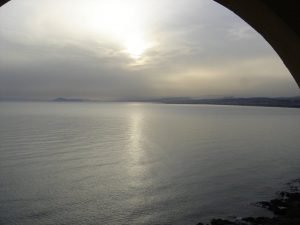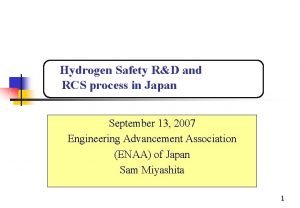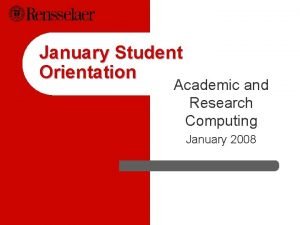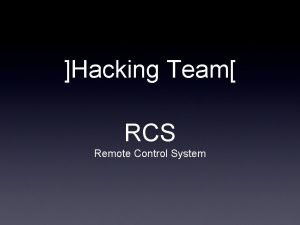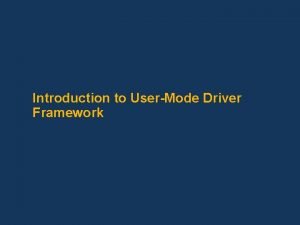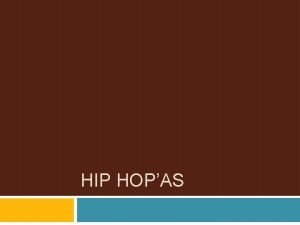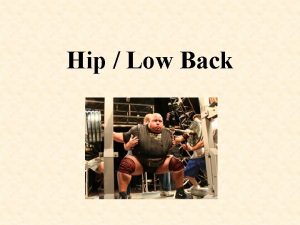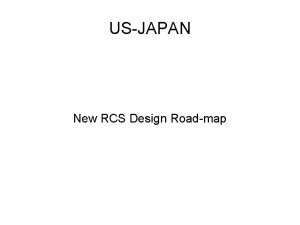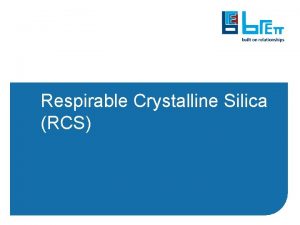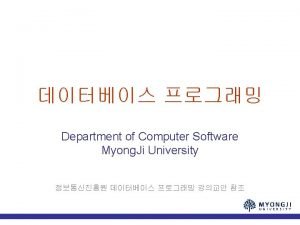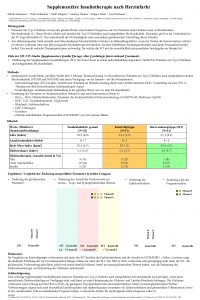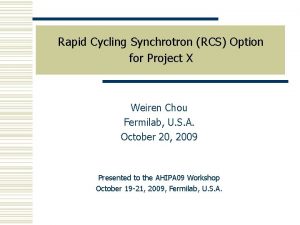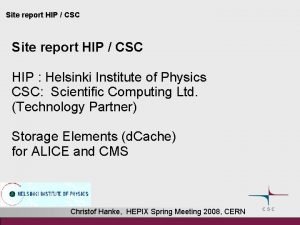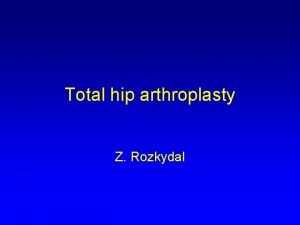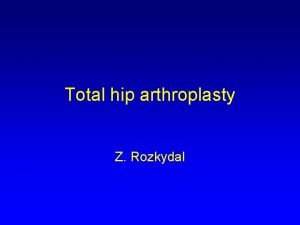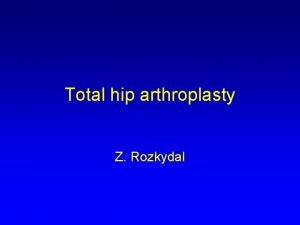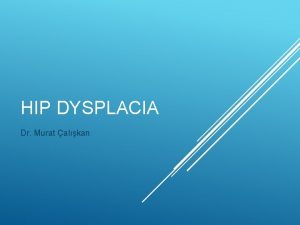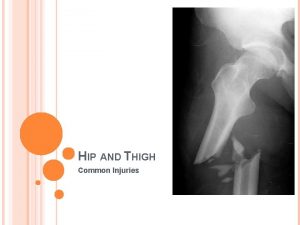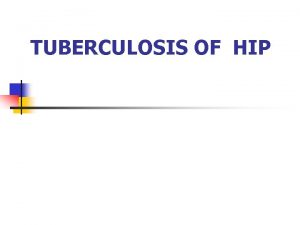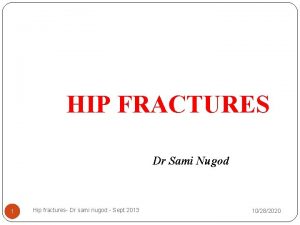The RCS Driver Option H Schnauer for HIP





























- Slides: 29

The RCS Driver Option H. Schönauer for HIP WG 9. 04. 2003 u Motivation u Basic Spec’s and Requirements u Layout u Challenges u Some Details u Cost Estimate

Motivation: N. B. When the neutrino boom started, the SPL was already there… q Ø Some Assumptions and Beliefs : Production requires higher p energies Ø Low Rep rate ~10 Hz: Favorable for muon acceleration (RFC duty cycle), muon collider, possibly for cooling rings Short bunches 1 ns rms can be made (almost) naturally Synchrotrons are less expensive than linacs Ø Ø q q Injector for SPS > t , replacing CPS 2. 2 Ge. V/50 Hz / 0. 44 MW Booster (150 k. W in parasite for !)

Specifications for Proton Driver from Nu. Fact (and CERN)

Perspective on Earlier Nu. Fact. Scenarios of 4 MW Beam Power

P 08/03/2000 Perspective on Scenarios H. O. S. 5

RCS Driver Layout Main Ring Cycle

Specific Challenges of the RCS’s • • • RF capture during injection into booster accelerating bucket: no time for truly adiabatic capture critical voltage program, cf. Slide “Quasi -adiabatic capture in RCS” Some capture loss may be inevitable higher injection energies unfavorable High t–Lattices with dispersion-free SS are difficult. Additional constraint on 1 coeff. near transition; To be met together with zero-chromaticity and large dynamic aperture Very large RF voltages required; Little SS space for RFC’s in dispersion-free regions

Specific Challenges and. Problems of the 30 Ge. V RCS, cont’d. • • Enormous stored energy in the large magnets: 300 k. J in each of the 64 main dipoles of the NF 952 lattice. Consequence: Very expensive resonant PS or even more expensive IGBT groups Long holding time on flat bottom of main synchr. coupled bunch instabilities All resonators need to be damped; difficult for HOM in accelerating cavities; 30 Ge. V adiabatic compression: Low fsy =140 Hz at end of cycle. Nevertheless natural bunch length of 1 ns rms is achieved. High Q resonators up to 200 MHz may cause loss. Tight Impedance budget: Z/jn <2 ohms critical Large shielded ceramic chambers or alternatives

180 Me. V H- Linac from RAL

2. 2 Ge. V Booster

30 Ge. V / 8 Hz Main Ring

2. 2 Ge. V Booster Lattice (Stretched Austron RCS Lattice)

2. 2 Ge. V Booster Approximate Lattice

Quasi-Adiabatic Trapping into a Rapidly Cycling Synchrotron at 150 Me. V (0. 5 MW/50 Hz AUSTRON III) Early Trapping: RF Voltage limited to preserve capture efficiency RF Voltage increase can begin only after 1/4 rotation ! A careful tracking study is always necessary to achieve loss-less capture at least in simulation !

Driver Lattice NF 952 Yuri Senichev 2000

Hybrid Lattice GHR 30 Ge. V Grahame Rees 2002

NF 952 Lattice: 1 bare= 0. 047 1 (0)= -0. 026 1 (-6)=0. 0006 (=Chromaticity)

GHR 30 Ge. V Lattice: 1 bare= 0. 042 1 (0) = 0. 014 (=Chromaticity)

W. PIRKL'S DESIGN for RF CAVITY 10 MHZ for the 30 Gev / 8 Hz RCS

A 2 nd harmonic has been added to the sinusoidal magnet cycle to smooth the motion and the forces on the tuning vibrator.

Availability of dispersion-free long straight sections in the 30 Ge. V Lattices

The SPL + 30 Ge. V RCS Scenario SPL + RCS Scenario

Cost Estimate (RAL) of 180 Me. V Linac for RCS Scenarios

Cost Estimate of 2. 2 Ge. V / 50 Hz Booster for the CERN RCS scenarios

Cost Estimate of 25 -30 Ge. V / 8 Hz Drivers for the CERN RCS scenario

Partial Cost Estimate of PDAC Rings Sources (acknowledged) : Magnets M. Sassowsky Power Supplies H. Ullrich Vacuum P. Strubin RF Injection, Extraction Beam Diag. Collimators R. Garoby Scaled from ESS Study (1996)

COMPARISON Reference Scenario SPL+ PDAC Rings vs. Alternative RCS’s

Summary: • • No Conclusions … Full PDAC and full RCS Driver Costs appear comparable ~ 400 - 500 MCHF RCS 1 st stage: For ~200 MCHF one can get a 0. 5 MW / 2. 2 Ge. V / 50 Hz proton Source = 3 present ISIS, in reach of today’s technology • 30 Ge. V Machine requires major hardware developments: High-Gradient RFC’s in the 10 MHZ range for small frequency swing, Cost-effective large Power Converters, resonant or IGBT etc. , vacuum chambers

Appendix: Cost Estimate and Power Requirements of RCS Main Magnets
 Hip to the hippity hop
Hip to the hippity hop Poem about hip hop
Poem about hip hop Question option 1 option 2
Question option 1 option 2 Option a option b
Option a option b Urgent care rcs
Urgent care rcs Inspire rcs
Inspire rcs Rcs demo
Rcs demo Rcs electronic control schema elettrico
Rcs electronic control schema elettrico Rcs+
Rcs+ Rcs japan
Rcs japan Webmail.rpi.edu
Webmail.rpi.edu Rcs remote control systems
Rcs remote control systems Umdf reflector
Umdf reflector Nyckelkompetenser för livslångt lärande
Nyckelkompetenser för livslångt lärande Svenskt ramverk för digital samverkan
Svenskt ramverk för digital samverkan Bunden form dikt
Bunden form dikt Klädsel i rom
Klädsel i rom Tidbok yrkesförare
Tidbok yrkesförare Gibbs reflekterande cykel
Gibbs reflekterande cykel Vilken grundregel finns det för tronföljden i sverige?
Vilken grundregel finns det för tronföljden i sverige? Verktyg för automatisering av utbetalningar
Verktyg för automatisering av utbetalningar Bamse för de yngsta
Bamse för de yngsta Vem räknas som jude
Vem räknas som jude Exspektans eller expektans
Exspektans eller expektans Tillitsbaserad ledning
Tillitsbaserad ledning Romarriket tidslinje
Romarriket tidslinje Boverket ka
Boverket ka Informationskartläggning
Informationskartläggning Varför kallas perioden 1918-1939 för mellankrigstiden
Varför kallas perioden 1918-1939 för mellankrigstiden Borstål, egenskaper
Borstål, egenskaper
